Every November, before the first frost hits the Puget Sound region, I have to put my banana tree to bed.
But first, I must point out that technically this is not a “tree,” it’s a cluster of large stalks called pseudostems that increases in number every year, expanding outwards from the center.
The lumpy, tangled brown wad in the photo below is what’s left of the original $5 plant from the grocery store, which gave up the ghost several years ago and is now surrounded by its children as they come poking up in the spring.
This tropical plant will survive outside at latitude 47° North during the occasional frosts and snowfalls of a maritime winter if it is tucked in for the duration, which entails cutting it down, covering the stumps with mulch, then spreading a tarp over it.
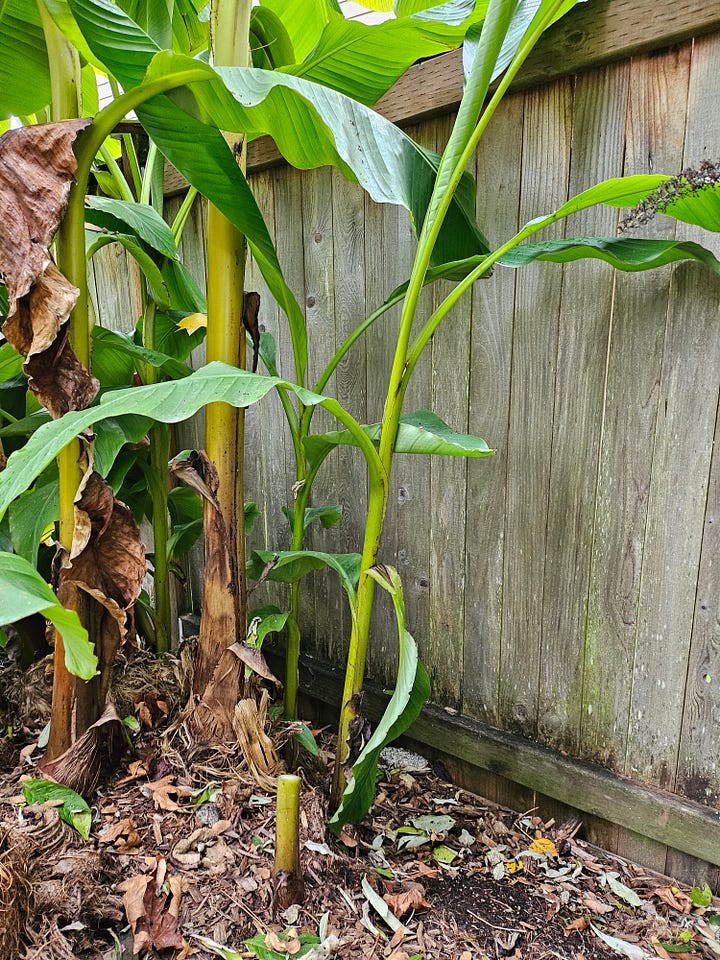
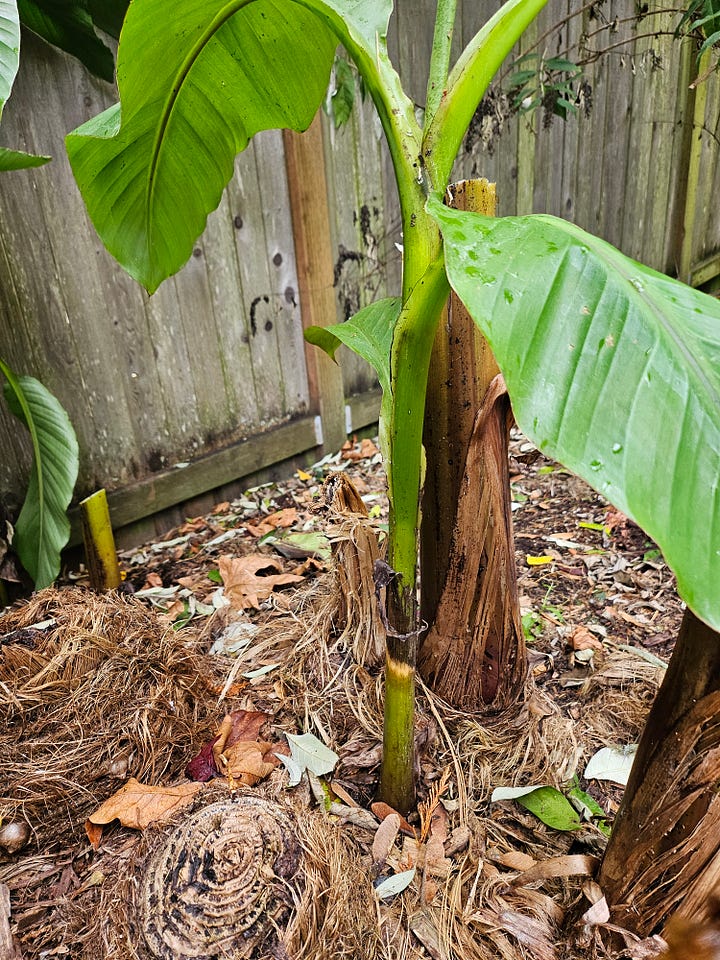
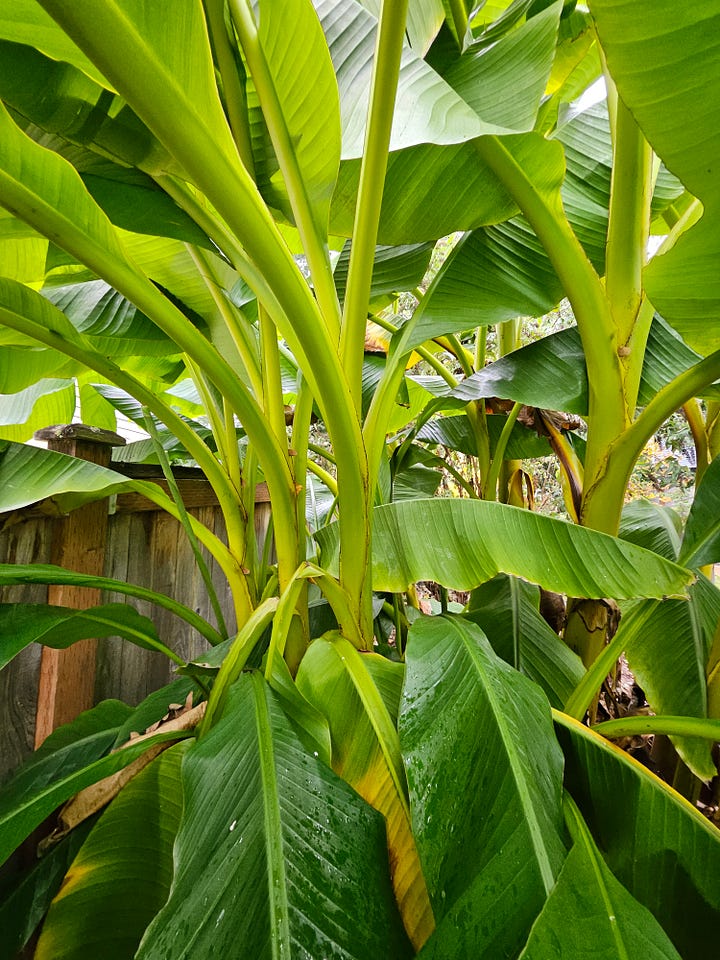

What started with the baby banana plant I bought on impulse has morphed into a yearly two day project. Managing the biomass that piles up is more work than actually cutting it down.
The trunks are not hard to cut, they are mostly water, but the bigger ones are quite heavy.
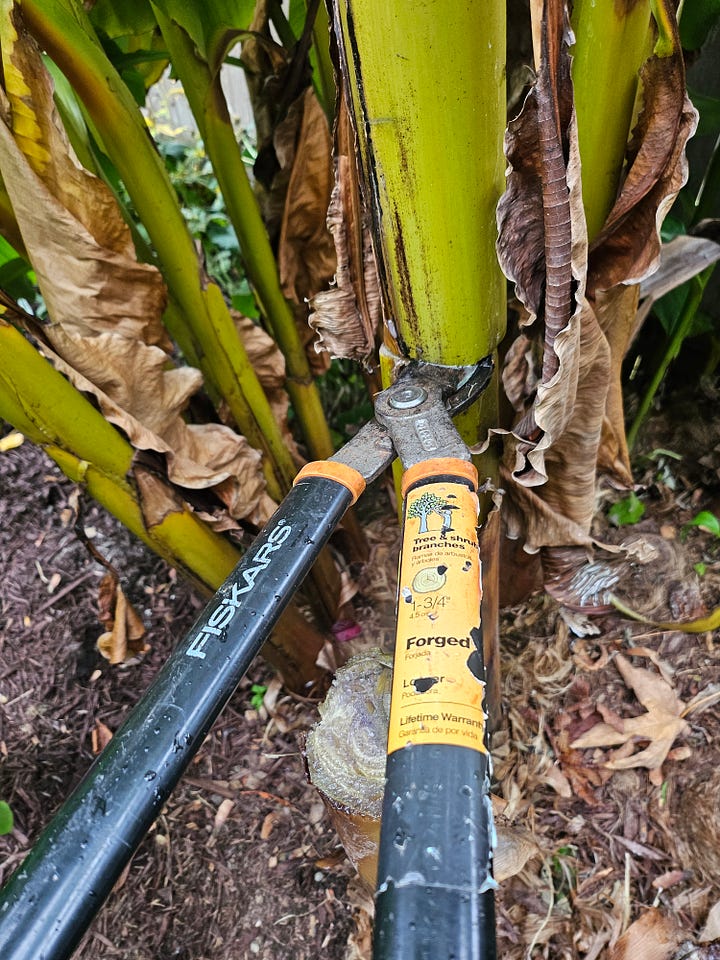

The pseudostems are composed of compressed leaf material, not woody like a regular tree trunk. The tightly wrapped fronds look like trumpets erupting out of the center of the stem before opening up into leaves that can expand up to six feet in length.
In the spring I dig up a few of the smaller stems as they emerge, pot them up and offer them free to good homes. I have also given away many leaves to my Indian neighbors, who use them as platters during their festival parties.
In the past I have used banana leaves to mulch my raised beds, but this year the beds still have stuff growing in them, so I mulched around the banana roots and under the butterfly bush in the corner.
Something I find interesting; the leaves will not rot or mold, even after months of being wet all the time. When the sun finally comes back out, they will dry into a light brown paper-like material.
That tarp looks a bit ominous, like it's hiding a giant lurking toad.
Anyway, I don’t know what I’m going to do with all these naked stems; probably chop them up and add them to the yard waste bin.
The bananas we eat are produced by large herbaceous flowering plants of the genus Musa, native to the tropical climates of Indonesia, Maylasia, Australia and New Guinea. There are many varieties, including a red banana. ‘Plantain’ usually refers to banana species that are cooked, but they are basically the same as the ones we cut up to go on our breakfast cereal.
I discovered bananas as a garden project during a “Bainbridge In Bloom” garden tour. Famous Bainbridge Island gardeners and artists George Little and David Lewis have a large banana grove, so are experts on how to care for them.
Their garden is spectacular; full of art, sculpture and an exotic collection of temperate climate plants, many of a prodigious size. I don’t know if the garden is still open to visitors, but I highly recommend their book “A Garden Gallery” as a source of inspiration.
Now, you might be asking, do I ever get any actual bananas? Sadly, no. While once or twice some very small green nubbins have appeared, the growing season is too short.
My husband’s contribution to household banana cultivation is to make jokes about tarantulas, owing to an ancient urban legend about tarantulas in the Far East getting rounded up with harvested bananas, traveling to America and then leaping out onto unsuspecting shoppers in the produce section. But I have yet to encounter any tarantulas in my garden.



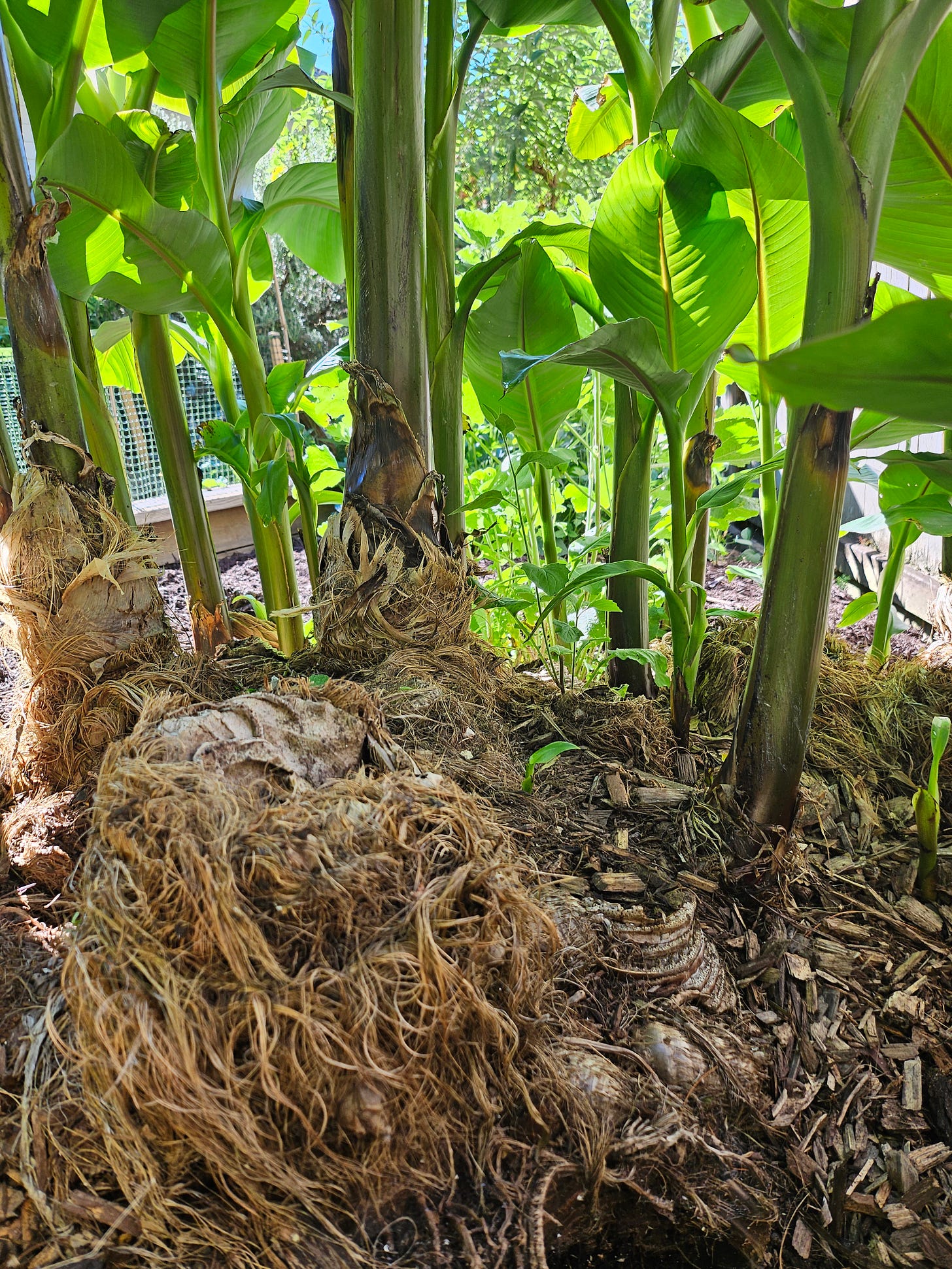


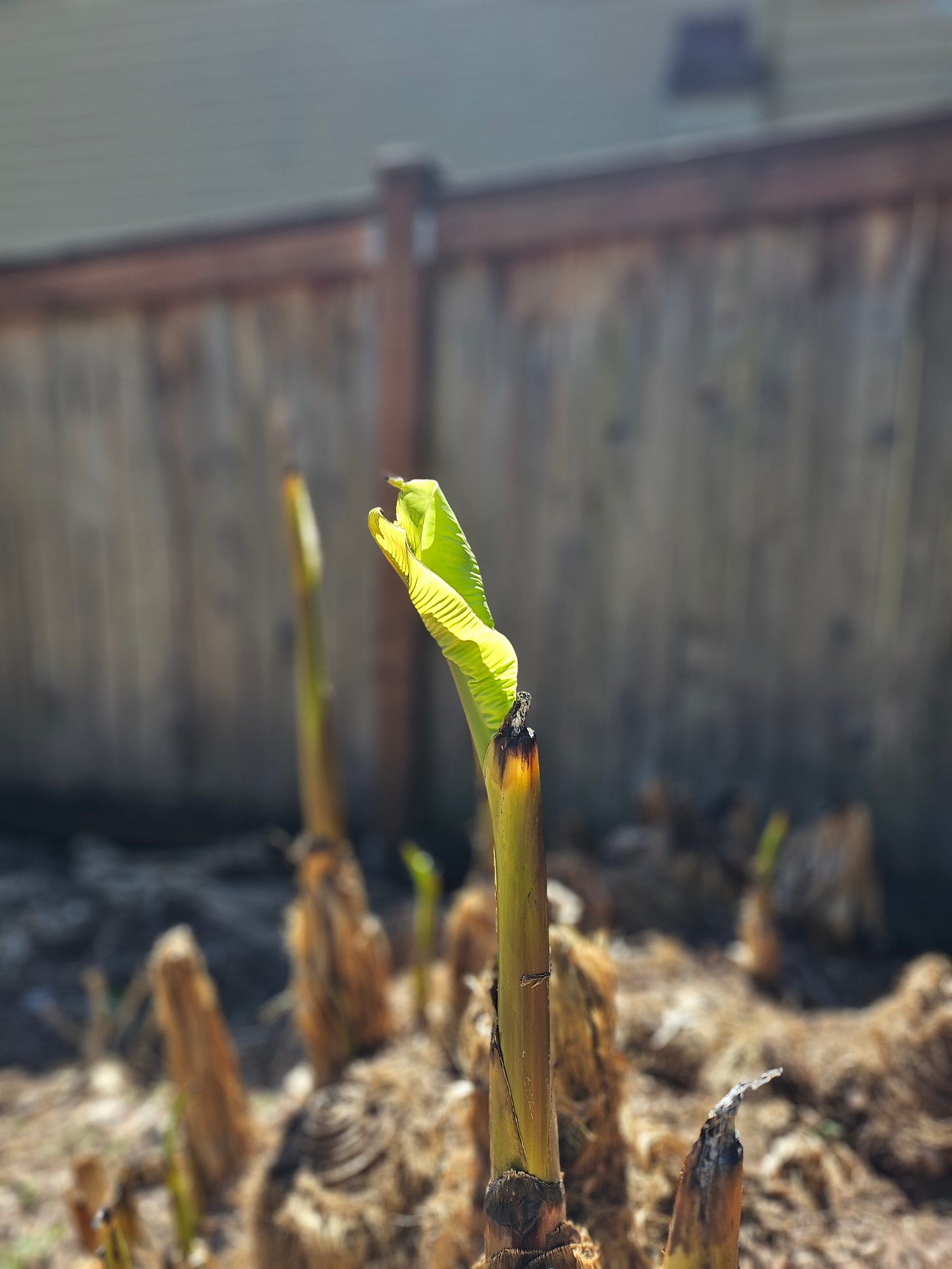

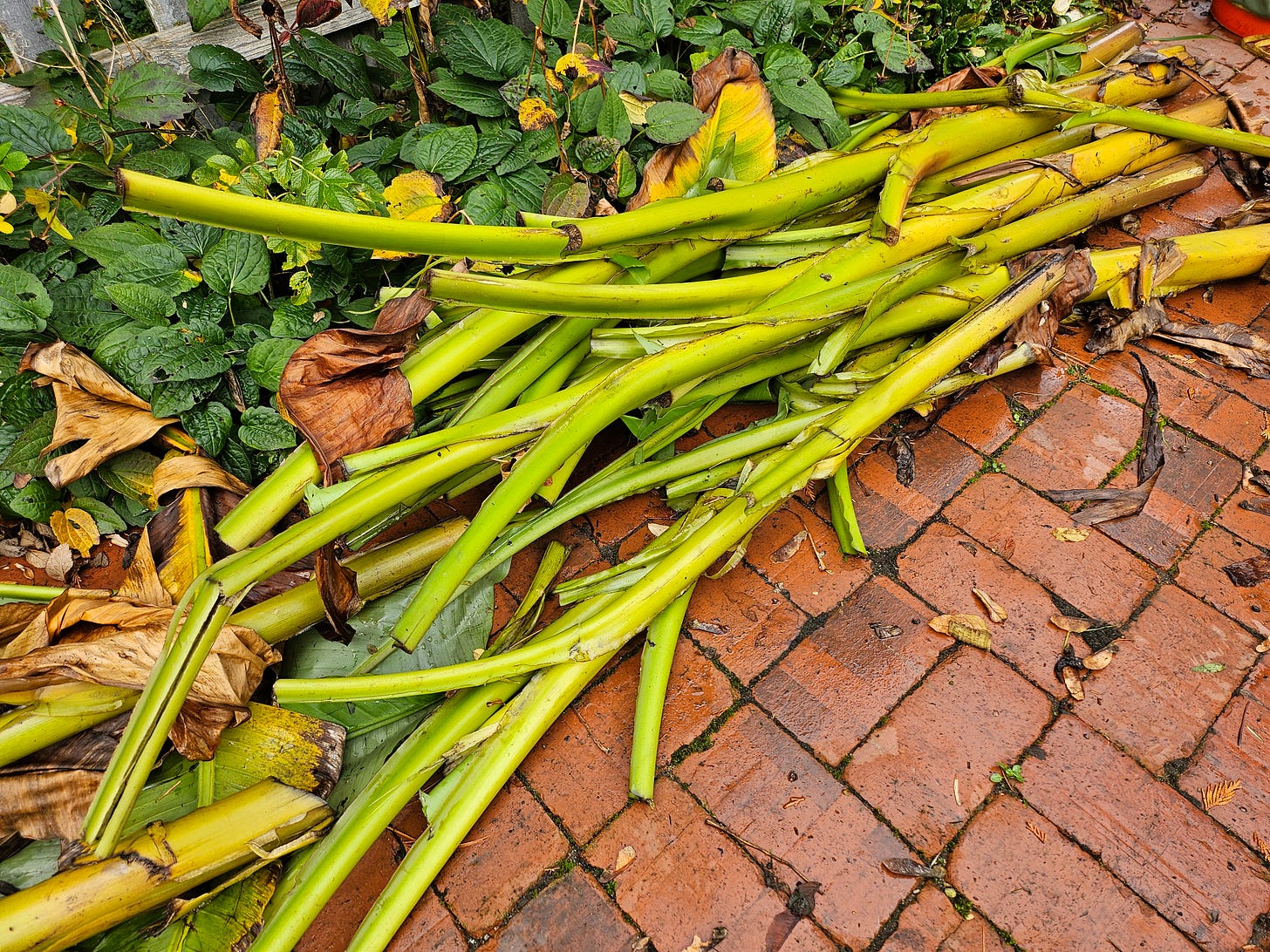

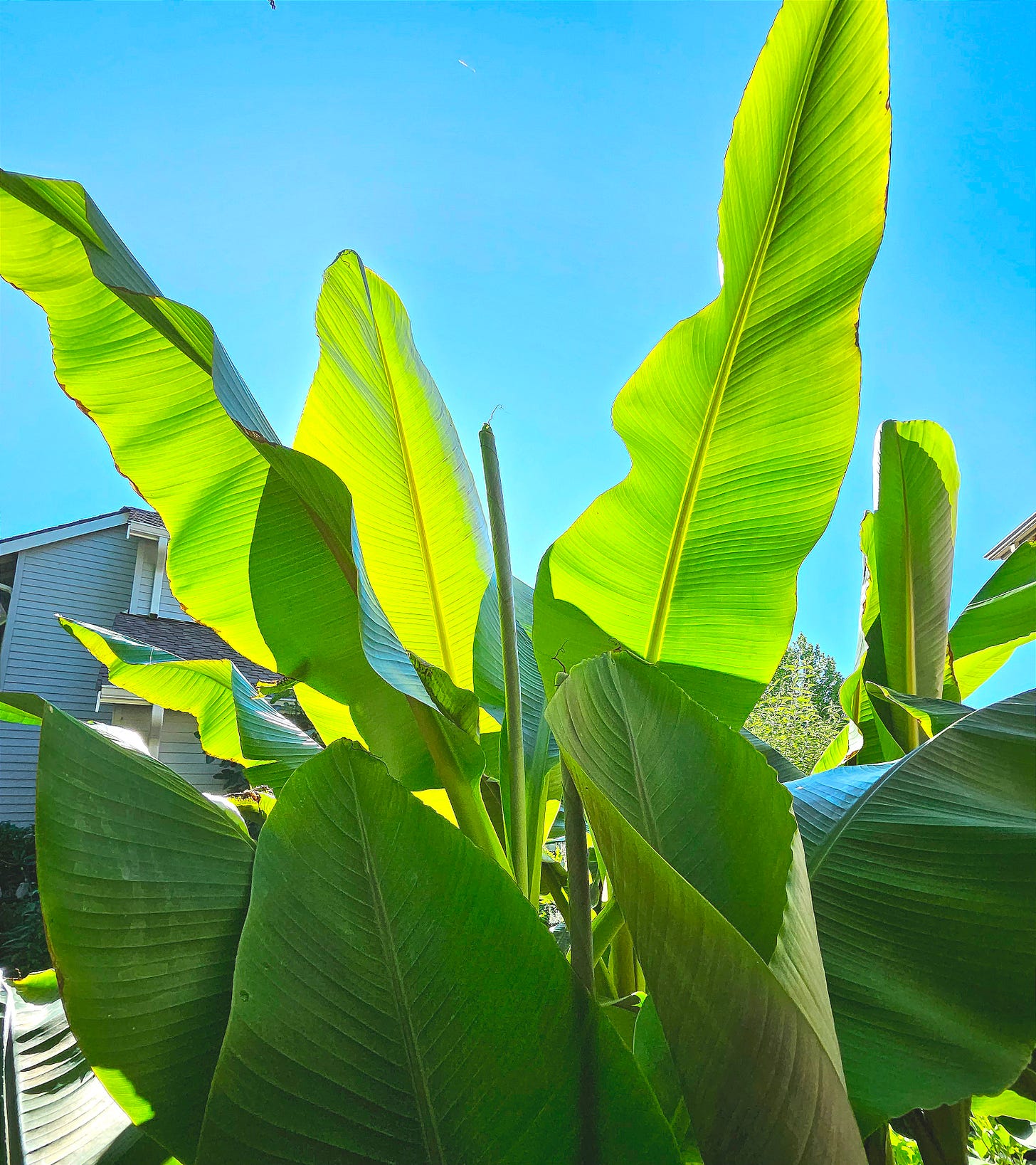
Awesome! I live in Portland near Mount Tabor. There is a house with a banana plant similar to yours that I see and always wondered, "how in the hell does that plant survive the winters here!?" I wonder if they do similar prep every winter.
We have a serious grove of banana plants here in Olympia. They get huge every summer. They love water and nitrogen. Deer and bugs won't eat them for some reason. As you mentioned, cutting them back after the first frost is a job.